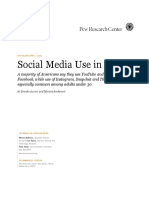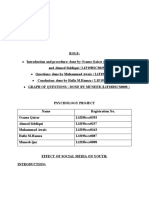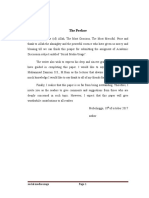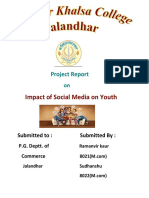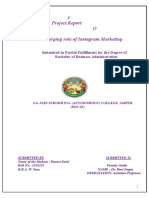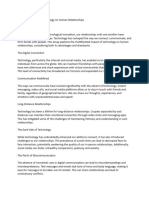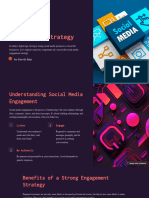0% found this document useful (0 votes)
11 views10 pagesAnalysis Social Media Usage
This report examines social media usage across four generations within a family, highlighting differences in platform preferences, purposes, and perceptions compared to traditional media. Findings reveal that younger generations favor platforms like Instagram and TikTok for real-time updates and social interaction, while older generations tend to use Facebook and WhatsApp more selectively for news and family connections. Overall, the study illustrates a shift towards digital media among younger users, contrasted with older users' reliance on traditional media for its perceived reliability and depth.
Uploaded by
MAKAR S.Copyright
© © All Rights Reserved
We take content rights seriously. If you suspect this is your content, claim it here.
Available Formats
Download as DOCX, PDF, TXT or read online on Scribd
0% found this document useful (0 votes)
11 views10 pagesAnalysis Social Media Usage
This report examines social media usage across four generations within a family, highlighting differences in platform preferences, purposes, and perceptions compared to traditional media. Findings reveal that younger generations favor platforms like Instagram and TikTok for real-time updates and social interaction, while older generations tend to use Facebook and WhatsApp more selectively for news and family connections. Overall, the study illustrates a shift towards digital media among younger users, contrasted with older users' reliance on traditional media for its perceived reliability and depth.
Uploaded by
MAKAR S.Copyright
© © All Rights Reserved
We take content rights seriously. If you suspect this is your content, claim it here.
Available Formats
Download as DOCX, PDF, TXT or read online on Scribd
/ 10
